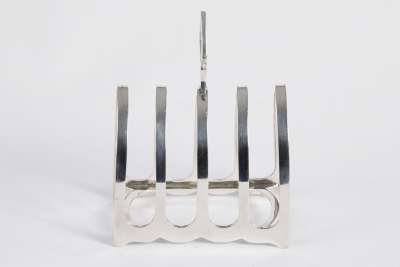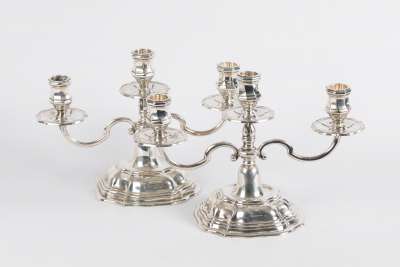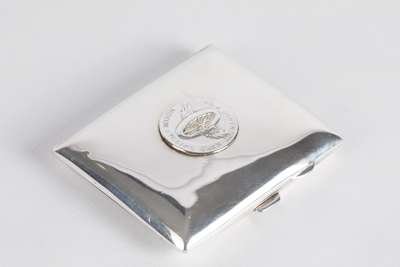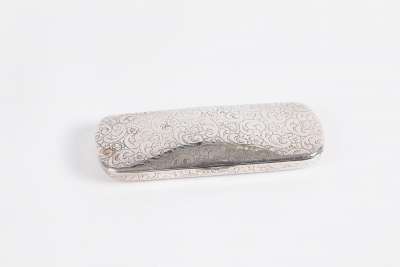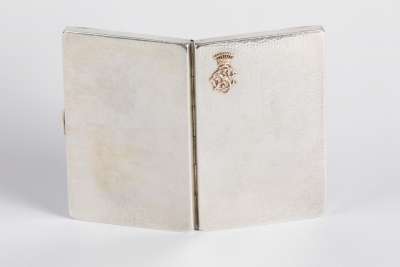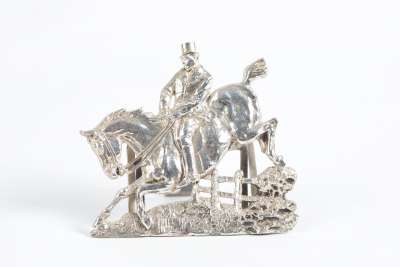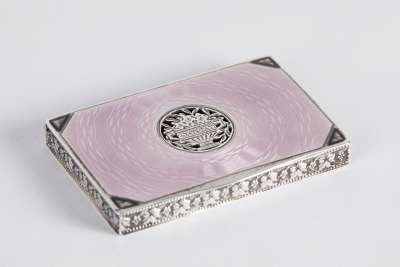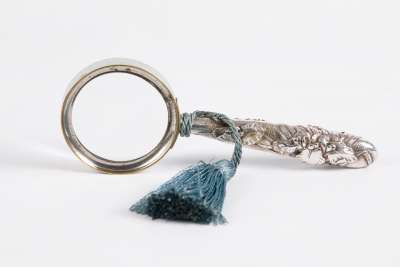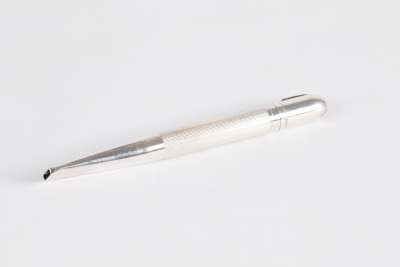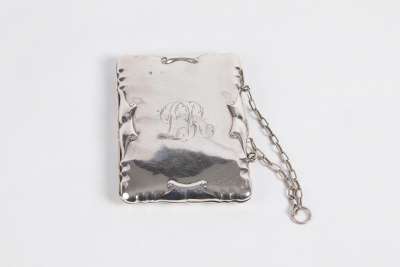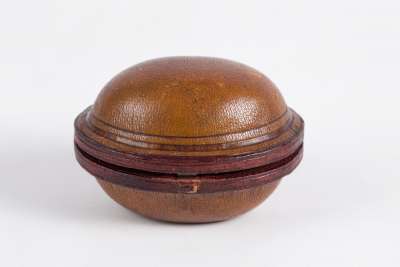This English Georgian snuff box, crafted circa 1820, is a remarkable example of the era's functional artistry. Made from horn with silver mounts, this piece embodies the elegance of Georgian craftsmanship. Its rectangular form features smooth, rounded edges and a hinged lid, revealing a finely finished interior. The silver mountings, tested to 925 purity, add a touch of refinement and durability. A hallmark of its time, this snuff box originates from England, a country known for its skilled artisans and quality materials during the Georgian period.
Condition Report
The snuff box is in very good condition, displaying minimal wear that is consistent with its age and historical use. The horn material has retained its sheen, with only slight surface marks that are typical for such items. The silver mountings are intact and show a natural patina that can be expected in silver pieces of this age. The hinge operates smoothly, indicating careful handling over the years. Overall, the box has been well-preserved, offering a glimpse into its storied past without compromising its structural integrity.
Dimensions
Weight: 30gm, Length: 8cm, Width: 4.5cm, Height: 3cm.
A Companion for the Snuff Connoisseur
During the Georgian era, snuff boxes were not merely practical items but also symbols of social standing and personal taste. This particular box would have served as an essential accessory for the snuff connoisseur, conveniently holding a personal stash of snuff for on-the-go enjoyment. The compact design made it easy to carry in a pocket, while the durable horn and silver construction ensured it withstood the rigours of daily use. Such snuff boxes were often brought out during social gatherings, where sharing snuff was a common practice, making them both a personal item and a social tool.
Quintessential Georgian Elegance
This snuff box is a fine representation of Georgian elegance, characterised by its understated design and functional artistry. Georgian style, spanning from 1714 to 1830, is recognisable for its classical influences and attention to detail. The use of horn and silver in this piece reflects the period's preference for natural materials combined with metalwork to create objects that were both beautiful and utilitarian. The minimalist aesthetic of this snuff box, with its smooth surfaces and subtle silver accents, aligns with the Georgian ethos of elegance through simplicity.
The Craft of Horn and Silver
The making of a horn and silver snuff box involved skilled craftsmanship, starting with the careful selection of horn known for its durability and natural beauty. The horn would be shaped and polished to a smooth finish, highlighting its unique patterns. Skilled silversmiths would then create the mountings, ensuring they fit seamlessly onto the horn. The silver was most likely hand-worked to create the intricate details in the hinges and closure, demonstrating the high level of craftsmanship typical of the period. The combination of these materials not only enhanced the snuff box's aesthetic appeal but also its longevity.
Attributed to Georgian Silversmiths
While the exact maker of this snuff box is not identified, it reflects the craftsmanship typical of Georgian silversmiths, who were renowned for their precision and quality. Workshops from cities like London and Birmingham were prolific in producing such items, contributing to the rich tradition of English metalwork. These artisans upheld rigorous standards, ensuring each piece was not only functional but also a testament to the skills and artistry of its creator. The 925 silver purity indicates adherence to high standards, a hallmark of reputable Georgian silversmiths.
Sought by Collectors of Georgian Antiques
Snuff boxes like this one are highly prized by collectors of Georgian antiques for their historical significance and craftsmanship. Collectors are often drawn to the stories these objects tell, reflecting the social customs and material culture of the early 19th century. The combination of materials, design, and functionality makes them fascinating to those interested in the interplay between art and daily life during the Georgian period. As a result, such pieces are cherished not only for their aesthetic and practical attributes but also for their ability to connect us with the past.



